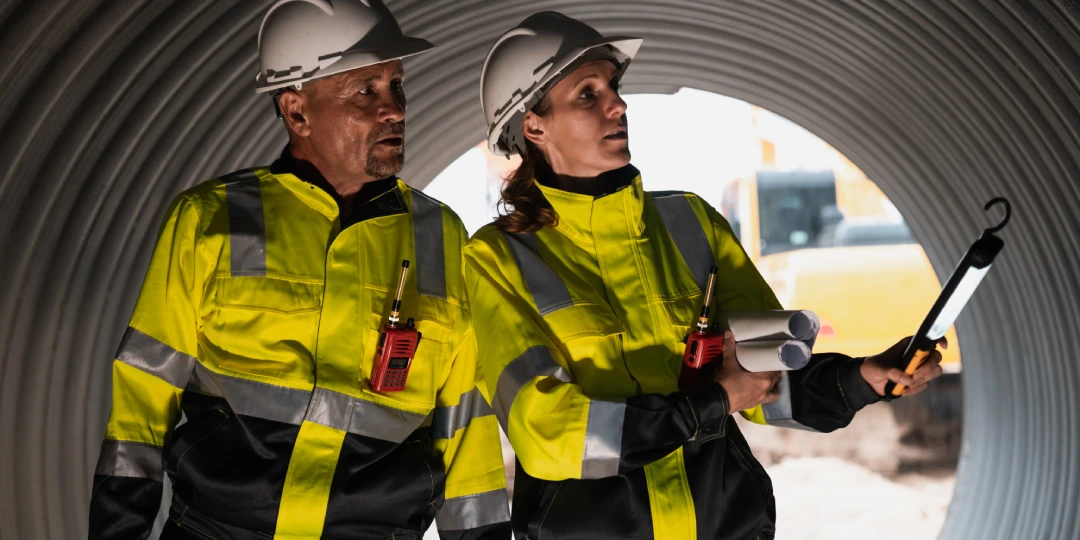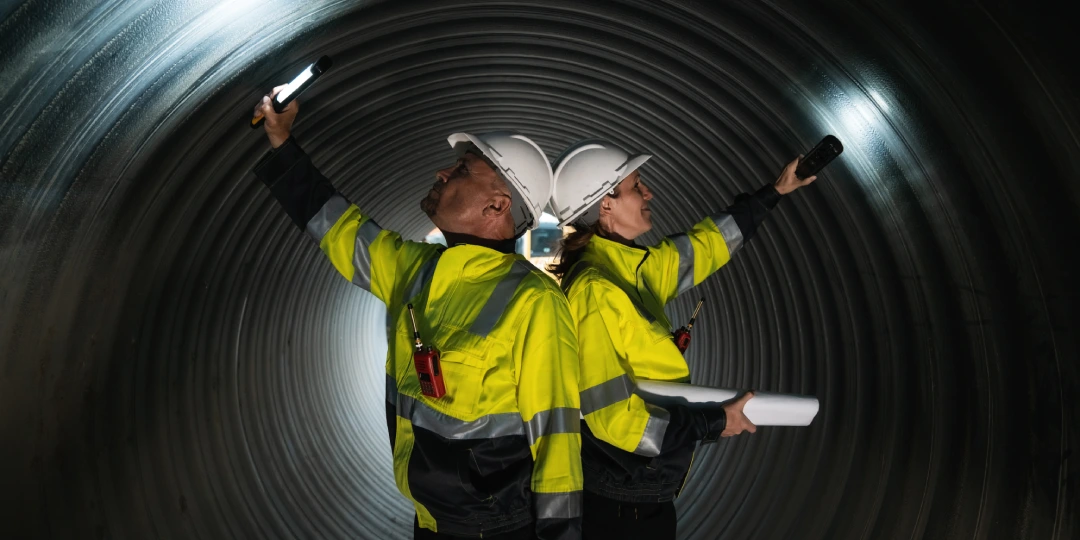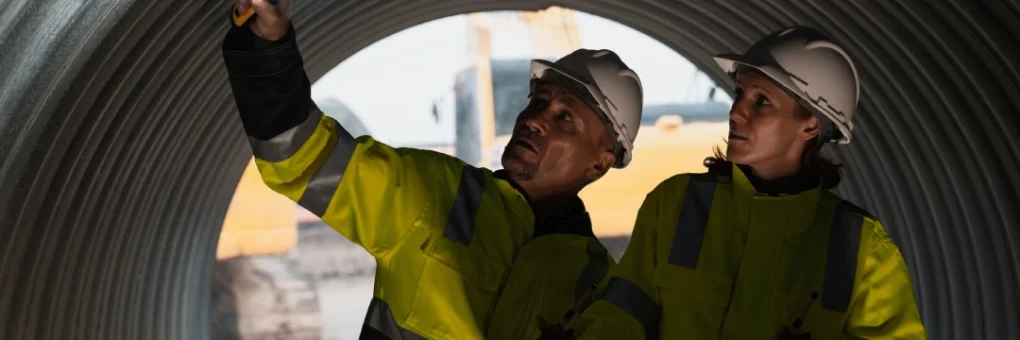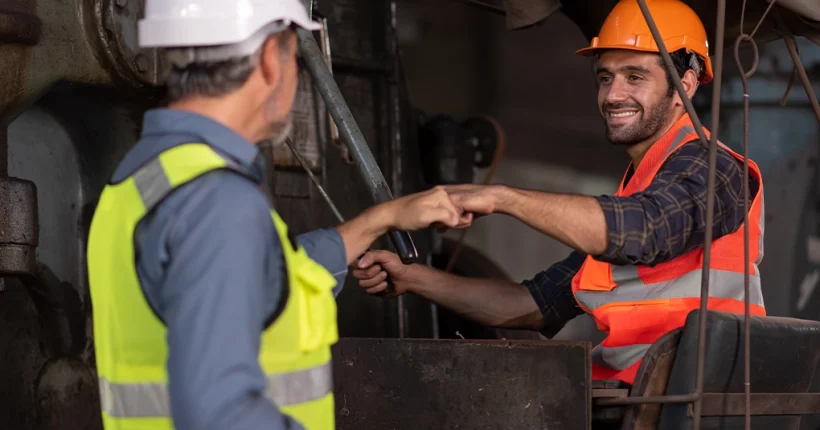Introduction: The Hidden Hazards of Confined Spaces
Confined spaces don’t always announce themselves with flashing warnings or visible risks. More often, they appear routine—a utility vault under a sidewalk, a storage tank on a jobsite, a maintenance shaft inside a building. But within those restricted walls, hidden hazards can escalate fast: a drop in oxygen levels, the presence of toxic gases, or a sudden engulfment risk. For workers in Nashville’s booming construction and industrial zones, confined spaces are becoming a more frequent reality, and with that, a higher exposure to danger.
At Division One Safety, confined space hazards aren’t just acknowledged in a manual—they’re approached with surgical precision. The company has built its safety culture around a proactive philosophy: risk doesn’t wait, so neither should prevention. Every confined space is assessed, documented, and prepped by experienced professionals who understand the gravity of the environment. Their teams don’t walk in blind. They walk in ready—with real-time monitoring, clear communication protocols, and layered protective systems.
This mindset sets Division One apart. Confined space safety isn’t treated as an add-on to broader jobsite safety—it’s an area of expertise. Like trench safety or electrical hazard protocols, confined space entry requires specific knowledge and deliberate action. At Division One, there are no assumptions. Every space is a question, and every answer is backed by protocol, preparation, and field-tested experience. It’s a standard that reflects the seriousness of the risk—and the company’s commitment to making sure every worker goes home safe.
What Defines a Confined Space—and Why It Matters
A confined space, by OSHA’s definition, is more than just a small or cramped area. It’s a location that meets three criteria: it’s large enough for a worker to enter and perform tasks; it has limited or restricted entry and exit; and it’s not designed for continuous occupancy. This includes environments like tanks, silos, pipelines, crawl spaces, and tunnels. These spaces may look simple on the surface, but their structural and atmospheric unpredictability make them inherently dangerous.
Understanding what qualifies as a confined space is crucial—because that classification dictates everything that follows. If a space meets OSHA’s definition but isn’t recognized as such, the oversight can be catastrophic. A lack of ventilation might go unnoticed. Hazardous gases could accumulate. A worker might enter without a spotter or atmospheric monitor in place. These aren’t hypotheticals—they’re the exact conditions that have led to serious injuries and fatalities across the country. Classification is the first—and most important—line of defense.
At Division One Safety, proper identification of confined spaces is step one in their risk elimination process. The team performs detailed walkthroughs of each site, mapping out potential entry points, evaluating access constraints, and determining whether a permit is required. Their safety managers aren’t there to react. They’re there to anticipate. By correctly labeling confined spaces before work begins, Division One prevents confusion, reinforces compliance, and protects workers from invisible threats that can’t be seen but are always taken seriously.
Nashville Jobsite Trends: The Rise in Confined Space Exposure
Nashville’s construction boom has brought with it a new layer of complexity. As development spreads across the city—from downtown towers to suburban infrastructure—the number of jobsites involving confined space work has grown sharply. Utility lines are going deeper. Stormwater systems are expanding. Renovations in older buildings often uncover narrow crawl spaces, ventilation shafts, or storage tanks that qualify as confined spaces. This shift means more workers are encountering confined environments, whether or not they’re prepared to handle them.
These conditions introduce elevated risks for both seasoned crews and newer workers unfamiliar with confined space procedures. In a fast-moving environment where deadlines are tight and subcontractors rotate frequently, safety controls can slip through the cracks. That’s where Division One Safety steps in. They bring consistent, high-level oversight to every project they support—ensuring that confined space protocols are not only in place but are followed with precision.
Division One’s presence on Nashville jobsites is a stabilizing force. They understand the pace and pressure of local builds, but never let speed compromise safety. Through real-time monitoring, clear signage, and boots-on-the-ground oversight, they mitigate the hazards that come with the city’s rapid development. In a market where the volume of confined spaces is rising, Division One meets the moment with experience, structure, and unwavering vigilance.

Regulatory Backbone: OSHA Standards and Local Compliance
OSHA’s confined space standards, particularly those found in 29 CFR 1910.146, serve as the regulatory foundation for safe entry. These rules outline exactly what employers must do: classify spaces correctly, conduct air testing, use permits when required, and provide rescue plans. But following regulations on paper isn’t enough. Real-world application—under pressure, in variable conditions—is what keeps workers alive. And that’s where many safety programs falter.
Division One Safety doesn’t stop at compliance. They use OSHA’s framework as a baseline, then build on it with elevated standards rooted in best practices and industry innovation. Their team understands how local jobsite realities in Nashville—from weather conditions to contractor variation—can affect confined space dynamics. So they adapt quickly while still upholding strict regulatory control. That blend of flexibility and formality allows them to stay one step ahead of both hazards and citations.
By operating with a deep knowledge of federal and Tennessee-specific requirements, Division One helps general contractors and site managers avoid costly violations, shutdowns, and liability issues. But more importantly, they ensure that confined space safety isn’t treated like a box to check—it becomes part of the site’s operational rhythm. Through precise documentation, trained staff, and constant audits, Division One enforces the kind of compliance that builds trust and protects lives.
Risk Assessment: How Division One Identifies Threats Before Entry
Every confined space is different. A manhole on one jobsite may present completely different risks than a boiler room on another. That’s why generic protocols don’t cut it. Before any entry takes place, Division One Safety conducts an exhaustive risk assessment tailored to the specific space and scope of work. Their process goes beyond a quick inspection—it’s a systematic breakdown of environmental, mechanical, chemical, and structural hazards.
They begin by evaluating atmospheric conditions. Are there hazardous gases? Is oxygen depleted? Could flammable vapors be present? From there, they look at the potential for engulfment, moving parts, or energy sources that could activate unexpectedly. They consider temperature, noise, visibility, and even access angles. Every factor is scrutinized to develop a complete picture of what workers are stepping into.
This level of diligence allows Division One to control the environment before a single worker enters. Controls like forced air ventilation, lockout/tagout systems, confined space barriers, and gas monitors are deployed strategically. Nothing is left to guesswork. Every measure is backed by data gathered during the assessment. The result is a space that’s not only compliant—but engineered for safety. When Division One clears a confined space for entry, it means every foreseeable risk has been identified, addressed, and mitigated.
Training That Saves Lives: Division One’s Worker Certification Programs
Confined space work demands more than a strong work ethic—it demands specialized knowledge, practiced skills, and the ability to react with precision under pressure. At Division One Safety, training isn’t treated as a one-time requirement but as an ongoing investment in worker readiness. Their confined space certification programs are designed to build more than just awareness; they build instinctual, on-the-ground competence.
Each worker receives hands-on instruction tailored to the realities of confined space entry. They learn to recognize unseen hazards, operate gas monitoring devices, deploy fall protection systems, and execute emergency egress techniques. But it doesn’t stop at equipment. Division One emphasizes communication, decision-making, and the ability to assess risk in real-time. Because in these spaces, confidence and clarity can mean the difference between a controlled exit and a critical rescue.
Division One’s certification standards meet or exceed OSHA requirements, and every program is delivered by trainers with field experience—not just classroom credentials. Whether the audience is a seasoned crew or new hires, the goal is the same: to ensure that anyone entering a confined space is not just authorized, but truly prepared. In a region where many jobsites are moving fast, this level of training stands out. It equips workers to think, act, and respond in ways that prevent harm—every single time.

Permit-Required Confined Spaces: Procedures and Documentation
When a confined space presents serious hazards—like a toxic atmosphere, engulfment risk, or dangerous machinery—it becomes a permit-required confined space under OSHA regulations. These spaces are high-risk zones, and entering them without a structured process isn’t just unsafe—it’s unlawful. At Division One Safety, permit protocols are executed with the same gravity as a rescue operation, because the consequences of shortcuts are too great.
Before any entry is allowed, Division One develops a comprehensive permit document outlining every known hazard, the protective measures in place, and a detailed plan for emergency response. This includes atmospheric test results, entry times, names of entrants and attendants, and verification of equipment functionality. The permit isn’t a formality—it’s an active tool that keeps everyone accountable and every step traceable.
Supervisors at Division One are trained to manage permit-required confined spaces with zero compromise. They ensure the permit is visibly posted, properly completed, and followed to the letter. No entry is allowed unless all conditions are met, and if any element changes—whether it’s the air composition or the task scope—the permit is reevaluated. This dynamic approach ensures the space remains controlled and that the documentation reflects real-time conditions, not just initial assumptions.
Atmospheric Testing and Monitoring: Tools and Best Practices
Atmospheric hazards are among the most insidious threats inside confined spaces. They’re invisible, odorless, and can become lethal in seconds. Low oxygen, high carbon monoxide, hydrogen sulfide buildup—any of these can overwhelm a worker before they know what hit them. That’s why Division One Safety treats atmospheric testing as a non-negotiable cornerstone of confined space safety.
Before any entry, air quality is tested using multi-gas monitors that detect oxygen levels, flammable gases, and toxic substances. These devices are calibrated regularly and operated by trained personnel who know how to interpret data, not just read a screen. But testing doesn’t stop once entry begins. Continuous monitoring is maintained throughout the duration of the task, ensuring that workers are alerted the moment conditions shift from safe to hazardous.
Beyond the hardware, Division One enforces strict best practices for placement and frequency. Air is tested at multiple levels—top, middle, and bottom—since gases settle differently depending on their weight. Alarms are set with conservative thresholds to maximize early warning time. If a monitor alerts, the protocol is clear: evacuate immediately and reassess. There’s no gray area, no hesitation. This level of vigilance ensures confined space entry doesn’t rely on luck. It relies on science, systems, and a refusal to cut corners.
Emergency Planning and Rescue: When Seconds Count
In confined space work, the difference between a close call and a casualty often comes down to one factor: preparation. When something goes wrong inside a confined space, time moves fast—and options shrink. That’s why Division One Safety never begins a confined space operation without a detailed, site-specific emergency rescue plan in place. This isn’t a generic SOP—it’s a ready-to-deploy rescue strategy tailored to the space, the work, and the team.
Every rescue plan includes clearly defined roles, rescue equipment that’s already staged and tested, and procedures that are rehearsed, not theoretical. Tripods, retrieval systems, harnesses, and winches are placed before entry—not brought in during crisis. Communications systems are checked, response times are reviewed, and personnel are briefed on how to execute a vertical lift or rapid extraction with minimal delay. In confined spaces, where traditional emergency services often can’t reach in time, self-rescue and in-house capability are the only real solutions.
Division One goes even further by ensuring that entry is never allowed unless rescue personnel are immediately available and actively engaged. There’s no reliance on outside response that may be minutes away when seconds are all that’s available. Their team is trained to handle emergency egress with speed, accuracy, and composure. It’s this level of foresight that turns a potentially devastating incident into a controlled, recoverable event—and that’s why Division One is trusted across Nashville’s high-risk worksites.

Frequently Asked Questions
1. What qualifies as a confined space on a jobsite?
A confined space is any area that is large enough for a worker to enter, has limited means of entry or exit, and is not designed for continuous occupancy. Common examples include tanks, tunnels, silos, utility vaults, and crawl spaces. At Division One Safety, each space is evaluated carefully to ensure proper classification and safety planning before entry.
2. How does Division One Safety ensure confined space emergencies are handled effectively?
Division One creates site-specific rescue plans for every confined space entry. These include staged rescue equipment, trained personnel on standby, and rehearsed emergency procedures. No worker is allowed to enter without an active plan in place, ensuring rapid response and recovery if an incident occurs.
3. What kind of training do workers receive before entering a confined space?
All workers undergo specialized confined space training that covers hazard recognition, equipment use, atmospheric monitoring, entry protocols, and emergency response. Division One’s certification programs are hands-on, scenario-based, and designed to ensure that workers are not just informed—but prepared to act with confidence and speed.

Conclusion: Why Division One Sets the Standard in Nashville for Confined Space Safety
Confined space work leaves no room for error. The risks are invisible, the conditions can shift in an instant, and the consequences of a misstep are severe. In a city like Nashville, where construction and industrial growth show no signs of slowing, the need for disciplined, expert-level confined space safety is more urgent than ever. Division One Safety meets that demand with a system that’s not only compliant—but comprehensive, consistent, and uncompromising.
What sets Division One apart isn’t just its adherence to OSHA standards. It’s the depth of its training programs, the rigor of its real-time monitoring, and the precision of its rescue planning. Every confined space entry is treated as high-risk, every worker is treated as essential, and every procedure is backed by data, preparation, and a refusal to cut corners. This is safety not as a policy, but as a culture—one that prioritizes lives over schedules, and integrity over shortcuts.
In the end, Division One delivers more than protection. It delivers peace of mind—for workers, supervisors, and project owners alike. When confined spaces are involved, there’s no such thing as over-prepared. There is only prepared—or not. Division One chooses prepared, every time. And that’s why they continue to lead the standard for confined space safety across Nashville and beyond.



